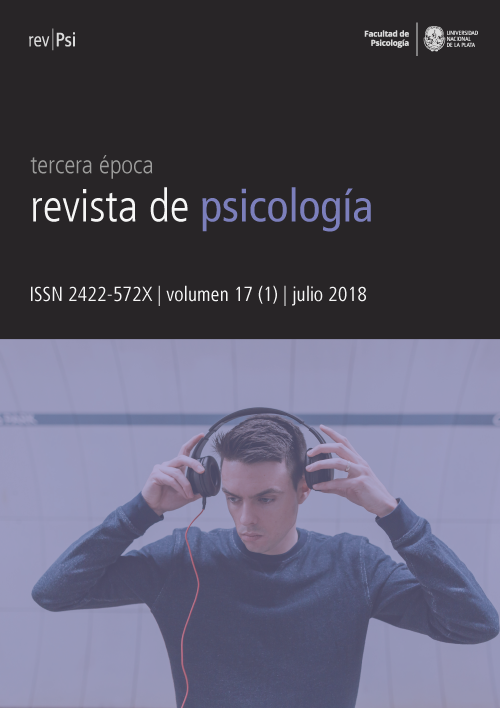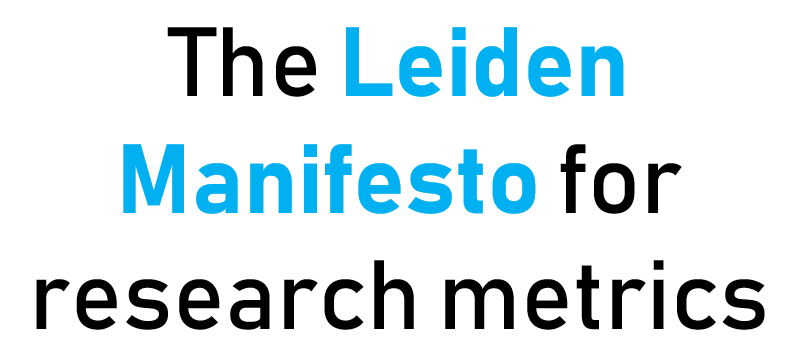Visões concorrentes para apresentar novas questões: reflexões sobre uma linha de pesquisa em focos de atenção na experiência estética
DOI:
https://doi.org/10.24215/2422572Xe013Palavras-chave:
experiência estética, foco de atenção, arte, transdisciplinarResumo
Os autores refletem sobre o diálogo transdisciplinar desenvolvido no estudo do foco de atenção na experiência estética. Parte de uma perspectiva histórica de modelos empíricos e métodos de estudo sobre a experiência estética e os focos de atenção (Madsen e Geringer), replicados na Argentina por Ana Lucía Frega desde 1980, que enfocam em particular a música. Na psicologia cognitiva, a atenção é considerada como uma função complexa e multifacetada da cognição humana. Os processos de atenção são estudados de diferentes maneiras, embora os aspectos visuais sejam enfatizados para sua mensuração. Vincular focos de atenção a diferentes estímulos (diferentes linguagens de arte) permitiu ampliar a investigação sobre a experiência estética; Assim, surgiu a necessidade de estudos transdisciplinares. A partir dessas articulações surgiram questionamentos sobre as possibilidades de expansão e construção transdisciplinar do conhecimento em experiência estética e foco de atenção em pesquisa artística.
Referências
Brieber, D., Nadal, M., Leder, H. y Rosenberg, R. (2014). Art in time and apace: Context modulates the relation between art experience and viewing time. PLoS ONE, 9(6), e99019. https://doi.org/10.1371/journal.pone.0099019
Brittin, R. V. (1995). Comparing continuous versus static measurements in music listeners’ preferences. Journal of Research in Music Education, 43(1), 36-46. https://doi.org/10.2307/3345790
Burin, D. I., Drake, M. A. y Harris, P. (Eds.). (2007). Evaluación neuropsicológica en adultos. Buenos Aires: Paidós.
Castro, D. y Murata, C. (2018). Estudio sobre experiencia estética y focos de atención: Prueba piloto de una investigación transdisciplinar en arte. Boletín de Investigación Educativo-Musical, 2(1), 34-53.
Cochrane, T. (2009). Joint attention to music. The British Journal of Aesthetics, 49(1), 59-73. https://doi.org/10.1093/aesthj/ayn059
Davis, A. P. (2003). Aesthetic response to choral music: Response comparisons of performer-participants and non-performer respondents. International Journal of Research in Choral Singing, 1(1), 60-64.
Drake, M. A. (2007). Evaluación de la atención. En D. I. Burin, M. A. Drake, y P. Harris (Eds.), Evaluación neuropsicológica en adultos (pp. 131-161). Buenos Aires: Paidós.
Frega, A. L. (2000). Aesthetic response to music as measured by the CRDI: A cross-cultural replication. Bulletin of the Council for Research in Music Education, 147, 61-65.
Frega, A. L. (2015). It does make a difference! A follow-up CRDI study on contemporary music, music scores and aesthetic experience. Presentado en 32º ISME World Conference on Music Education, Londres.
Frega, A. L., Limogni, R., Castro, D. y Murata, C. (2017a). Exploratory study of attention and aesthetic responses to music and dance applying the continuous response digital interface. Presentado en 7th World Alliance for Arts Education Conference “Engaging with Communities. Creative Pedagogies”, Auckland.
Frega, A. L., Limogni, R., Castro, D. y Murata, C. (2017b). Study of special cases while measuring aesthetic experience on contemporary music. Presentado en Congreso Internacional de Psicología de la Música ConΨMúsica, Madrid.
Frega, A. L., Limogni, R., Castro, D. y Murata, C. (2018). What about CRDI when looking at a ballet production: Movement and music [poster]. Presentado en 33rd World Conference of the International Society for Music Education, Baku.
Frega, A. L. y Murata, C. (2017). La necesariedad de la transdisciplina en estudios sobre focos de atención en arte. Presentado en XIV Semana de la Música y la Musicología, Jornadas Interdisciplinarias de Investigación “Cognición Musical. Estudios Interdisciplinarios en Música, Mente y Cerebro”, Buenos Aires.
Frego, D. R. J. (1999). Effects of aural and visual conditions on response to perceived artistic tension in music and dance. Journal of Research in Music Education, 47(1), 31-43. https://doi.org/10.2307/3345826
Gabrielsson, A. (2011). Strong experiences with music: Music is much more than just music. Oxford: Oxford University Press.
Geringer, J. M. y Madsen, C. K. (1995). Focus of attention to elements: Listening patterns of musicians and nonmusicians. Bulletin of the Council for Research in Music Education, 127, 80-87.
Geringer, J. M., Madsen, C. K. y Gregory, D. (2004). A fifteen-year history of the continuous response digital interface: Issues relating to validity and reliability. Bulletin of the Council for Research in Music Education, 160, 1-15.
Goldstein, A. (1980). Thrills in response to music and other stimuli. Physiological Psychology, 8(1), 126-129. https://doi.org/10.3758/BF03326460
Hüttermann, S. y Memmert, D. (2015). The influence of motivational and mood states on visual attention: A quantification of systematic differences and casual changes in subjects’ focus of attention. Cognition and Emotion, 29(3), 471-483. https://doi.org/10.1080/02699931.2014.920767
Limogni, R., Frega, A. L., Galante, G. y Castro, D. (2014). Contemporary music, music reading and aesthetic response: A CRDI study at undergraduate school. Preliminary report. En O. Odena y S. Figueiredo (Eds.), Proceedings of the 25th International Seminar of the ISME Commission on Research (pp. 194-208). João Pessoa: Federal University of Paraíba.
Madsen, C K, Byrnes, S. R., Capperella-Sheldon, D. A. y Brittin, R. V. (1993). Aesthetic response to music: Musicians versus nonmusicians. Journal of Music Therapy, 30(3), 174-191. https://doi.org/10.1093/jmt/30.3.174
Madsen, C K y Fredrickson, W. E. (1993). The experience of musical tension: A replication of nielsen’s research using the continuous response digital interface. Journal of Music Therapy, 30(1), 46-63. https://doi.org/10.1093/jmt/30.1.46
Madsen, C K y Napoles, J. (2006). Measuring the aesthetic response to music: Revising “new” and “old” measurement systems. En B. Olsson (Ed.), 8th International Symposium of the Research Alliance of Institutions for Music Education (pp. 83-92). Göteborg: Johan Öberg. Göteborg University.
Madsen, C. K. (1997a). Emotional response to music. Psychomusicology, 16(1-2), 59-67. https://doi.org/10.1037/h0094067
Madsen, C. K. (1997b). Focus of attention and aesthetic response. Journal of Research in Music Education, 45(1), 80-89. https://doi.org/10.2307/3345467
Madsen, C. K., Brittin, R. V. y Capperella-Sheldon, D. A. (1993). An empirical method for measuring the aesthetic experience to music. Journal of Research in Music Education, 41(1), 57-69. https://doi.org/10.2307/3345480
Madsen, C. K. y Coggiola, J. C. (2001). The effect of manipulating a CRDI dial on the focus of attention of musicians/nonmusicians and perceived aesthetic response. Bulletin of the Council for Research in Music Education, 149, 13-22.
Madsen, C. K. y Geringer, J. M. (2000). A focus of attention model for meaningful listening. Bulletin of the Council for Research in Music Education, 147, 103-108.
Madsen, C. K y Geringer, J. M. (2008). Reflections on Puccini’s «La Bohème»: Investigating a Model for Listening. Journal of Research in Music Education, 56(1), 33-42. https://doi.org/10.1177/0022429408323072
Madsen, C. K., Geringer, J. M. y Fredrickson, W. E. (1997). Focus of attention to musical elements in haydn’s «Symphony #104». Bulletin of the Council for Research in Music Education, 133, 57-63.
Marković, S. (2012). Components of aesthetic experience: Aesthetic fascination, aesthetic appraisal, and aesthetic emotion. I-Perception, 3(1), 1-17. https://doi.org/10.1068/i0450aap
Paterno, R. M. (2015a). Introducción. ¿Qué es la atención? En C. E. Tonglet (Ed.), Tests de atención sostenida. BTS-1. Batería de Tests con Símbolos 1 (pp. 15-21). Buenos Aires: Paidós.
Paterno, R. M. (2015b). Introducción. ¿Qué es la atención? En C. E. Tonglet (Ed.), Tests de atención alternante. BTS-2. Batería de Tests con Símbolos 2 (pp. 15-21). Buenos Aires: Paidós.
Paterno, R. M. (2015c). Introducción. ¿Qué es la atención? En C. E. Tonglet (Ed.), Tests de atención selectiva. BTS-3. Batería de Tests con Símbolos 3 (pp. 15-21). Buenos Aires: Paidós.
Rinder, L. (2011). Paying attention. Visual Inquiry: Learning & Teaching Art, 1(1), 49-51. https://doi.org/10.1386/vi.1.1.49_7
Schmidt, C. P. (1996). Research with the continuous response digital interface: A review with implications for future research. Philosophy of Music Education Review, 4(1), 20-32.
Seeley, W. P. (2006). Naturalizing aesthetics: art and the cognitive neuroscience of vision. Journal of Visual Art Practice, 5(3), 195-213. https://doi.org/10.1386/jvap.5.3.195_1
Downloads
Publicado
Edição
Seção
Licença

Os autores que publicam neste periódico aceitam as seguintes condições:
- Autores mantém os direitos autorais e atribuir o direito de primeira publicação para a revista, com a obra registrada sob uma Licença de atribuição Creative Commons (CC-BY) , que permite que terceiros usem o que é publicado sempre que mencionarem a autoria do trabalho e a primeira publicação desta revista.
- Os autores podem fazer outros acordos contratuais independentes e adicionais para a distribuição não-exclusiva do artigo publicado na revista ESTA (por exemplo, incluí-lo em um repositório institucional ou publicá-lo em um livro), enquanto eles indicou claramente que o trabalho foi publicado pela primeira vez nesta revista.
- Autores são permitidos e encorajados a publicar seus trabalhos na Internet (por exemplo, em páginas institucionais ou individuais) antes e durante o processo de revisão e publicação, pois pode gerar alterações produtivas e maior e mais rápida difusão do trabalho publicado (ver The Effect of Open Access).



































